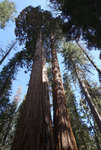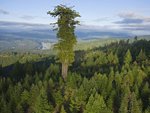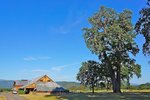pweifan
Shohin
Wow! Where is this tree? Near you in Houston?
I don’t know if it’s a champion, but it’s one of the biggest banyan trees I’ve ever been next to. From aerial root to aerial root in opposite sides of the trunk the tree spans 105’. The diameter of the central trunk (really just a fused collection of hundreds of aerial roots) is approximately 35’. So the circumference is approximately 110’. The width is about 210’ and the height about 110’. Here are some pictures:
View attachment 195412View attachment 195413

Texas sized accent I guess???Not a champion tree, but the biggest Staghorn fern I’ve ever seen. And it’s in my back yard!
View attachment 197210
Texas sized accent I guess???
The rootmass is about 6’ across and it weighs around 250 lbs.
S

Here’s a bad shot of the Angel Oak, near Charleston, SC. Apologies for the awful pictures.



Chalk up another tragedy for 2020. Fires have reached 14 of the 50 largest sequoia and hundreds of thousands of old growth trees.


We'll have to wait to see, but as a rule sequoias don't burn. The large trees have bark that can be 3' thick, and they may have survived dozens of fires. It is pretty rare for fire to take one down. They have actually evolved to need fire to reproduce. Their seed cones don't open unless heated by flames, so that the seedlings will germinate in cleared forest floor.
View attachment 329240

No Good, it's got reverse taperWe'll have to wait to see, but as a rule sequoias don't burn. The large trees have bark that can be 3' thick, and they may have survived dozens of fires. It is pretty rare for fire to take one down. They have actually evolved to need fire to reproduce. Their seed cones don't open unless heated by flames, so that the seedlings will germinate in cleared forest floor.
View attachment 329240
View attachment 329241
Back on the theme of champions, here is what I believe to be the tallest oak in North America. It is a California valley oak, Quercus lobata. I have three valley oak pre-bonsai, and also just recently obtained ten of them to plant in my landscape. If you want a big white oak, fast, this is your tree:
View attachment 329242
That’s great - apparently Valley Oak grow well in North Carolina?
S
